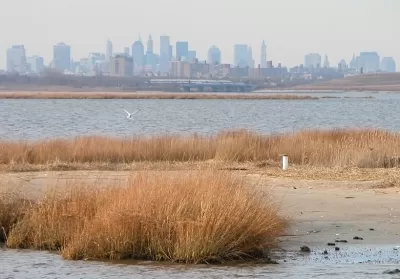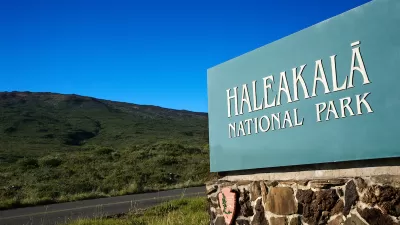Created so people could "experience nature in the midst of crowds," New York's Jamaica Bay National Wildlife Refuge embodies the characteristics of all modern national parks: abundant, welcoming, and threatened.

Hidden in plain view, the Jamaica Bay National Wildlife Refuge in Queens plays host to abundant waterfowl in a tidal marsh. Brandon Keim writes, "My cab drivers, most of them born and raised in Queens, often don't know where the refuge is. More New Yorkers have seen Jamaica Bay through an airplane window than from their feet. That's part of its beauty. There, still within a city of 8.4 million tightly packed people, is a place where you can not see anyone for long stretches of time. Or at least not anyone human."
This century's challenges will inevitably affect the refuge. "As Earth's carbon-choked climate continues to warm and its seas rise, the bay's beloved and ecologically vital features will be inundated, submerging marsh islands where bird colonies breed and tidal wetlands that shelter baby fish until they're ready for the open ocean."
On top of climate change, development near the park can erode the tidal buffer zone. Keim writes, "Too many people have already forgotten Hurricane Sandy's harsh lessons about the importance of wetlands and dunes for absorbing storms."
There's also the eternal paradox: how do you visit and enjoy a nature preserve when the best thing would be to leave it alone? "In a less-populated time, it might have seemed like the national parks didn't need our help, that they could thrive with benign neglect and the stewardship of a few people in uniform. If that was ever true before, it's certainly not true now."
FULL STORY: Our era’s iconic national park is hidden in New York City

Alabama: Trump Terminates Settlements for Black Communities Harmed By Raw Sewage
Trump deemed the landmark civil rights agreement “illegal DEI and environmental justice policy.”

Study: Maui’s Plan to Convert Vacation Rentals to Long-Term Housing Could Cause Nearly $1 Billion Economic Loss
The plan would reduce visitor accommodation by 25% resulting in 1,900 jobs lost.

Planetizen Federal Action Tracker
A weekly monitor of how Trump’s orders and actions are impacting planners and planning in America.

Waymo Gets Permission to Map SF’s Market Street
If allowed to operate on the traffic-restricted street, Waymo’s autonomous taxis would have a leg up over ride-hailing competitors — and counter the city’s efforts to grow bike and pedestrian on the thoroughfare.

Parklet Symposium Highlights the Success of Shared Spaces
Parklets got a boost during the Covid-19 pandemic, when the concept was translated to outdoor dining programs that offered restaurants a lifeline during the shutdown.

Federal Homelessness Agency Places Entire Staff on Leave
The U.S. Interagency Council on Homelessness is the only federal agency dedicated to preventing and ending homelessness.
Urban Design for Planners 1: Software Tools
This six-course series explores essential urban design concepts using open source software and equips planners with the tools they need to participate fully in the urban design process.
Planning for Universal Design
Learn the tools for implementing Universal Design in planning regulations.
Caltrans
Smith Gee Studio
Institute for Housing and Urban Development Studies (IHS)
City of Grandview
Harvard GSD Executive Education
Toledo-Lucas County Plan Commissions
Salt Lake City
NYU Wagner Graduate School of Public Service





























